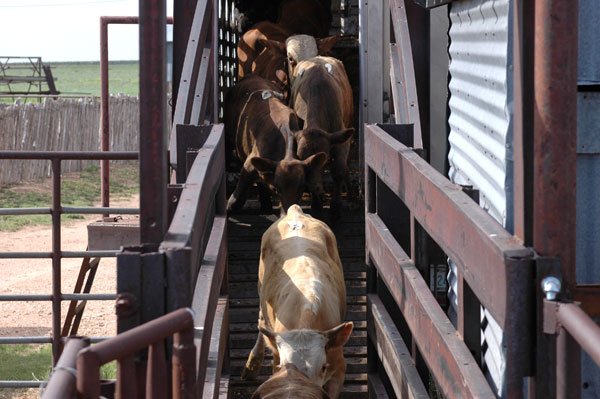Cold, wet weather and the delayed harvest restricted calf demand in some areas.
October 11, 2019

Current wet weather and this year’s late crop curtailed receipts at some auctions this week, as well as buyer demand.
“Farmer-feeders have just begun their corn harvest in some areas…Many don't have much interest in buying calves until they have their grain harvest complete, as they don't have the time necessary to check and doctor bawling calves,” say analysts with USDA’s Agricultural Marketing Service (AMS).
“Persistent rains have yard conditions wet and muddy, which is also causing cattle feeders to wait on buying calves. More moisture across the midsection of the country, coupled with the early winter storm, caused consignments of calves to cancel and auctions to reschedule in the Dakotas.”
Overall, according to AMS, steers and heifers sold from $3 per cwt lower to $2 higher, with instances of calves bringing as much as $8 lower in the Northern Plains.
“Good demand remains for yearlings as the supply becomes more limited and the cash fed cattle market has come off lows received in the aftermath of the (Tyson) plant fire in August,” say AMS analysts. “Demand for calves has been light to moderate at best, with sharp discounts being applied to un-weaned calves with no solid health programs.”
For instance, Andrew P. Griffith, agricultural economist at the University of Tennessee, explains, “The average price of value-added steers weighing 525 pounds on Tennessee markets this week was $14 per cwt higher than freshly weaned calves, which is a premium of $73.50 per head. The value difference between 625-pound value-added steers and freshly weaned steers of the same weight was a little over $84 per head.”
Feeder Cattle futures recovered the previous week’s losses, closing an average of $1.91 higher week to week on Friday (80 cents to $2.87 higher).
That was with Corn futures closing an average of 11 cents higher through the front four contracts week to week; an average of about 35 cents higher over the last three weeks.
Fed cattle prices higher in the North
Negotiated cash fed cattle trade was established only in parts of the North through Friday afternoon, based on USDA reports. Early dressed sales in Nebraska were $2 higher than the previous week at $172 per cwt. Live sales were at $109-$110 in Nebraska, but too few to trend.
Although too few to trend, early dressed sales were trading for the same price in the western Corn Belt. Live sales in the western Corn Belt were steady to $2 higher than the previous week at $109.
Live Cattle futures extended gains, closing an average of $1.24 higher week to week on Friday (95 cents higher to $2.10 higher in spot Oct).
Most of the market reaction from the Tyson plant fire is behind the market, according to Derrell Peel, Extension livestock marketing specialist at Oklahoma State University, in his weekly market comments.
“Certainly there are impacts and additional costs still being incurred by buyers and sellers to deal with the impacts of the closed packing plant. Though some in the industry were surprised and frustrated with market reactions after the fire, the type and duration of price behavior are exactly what is predicted by market economics,” Peel explains.
“Freely operating markets provide extreme price signals to provoke dramatic reactions to this type of shock, resulting in rather quick adjustments to adverse market conditions and recovery from market disruptions.”
Peel adds, “Limited packing capacity will likely continue to restrict fed cattle prices somewhat, but it appears the industry has thus far avoided even worse implications of a serious backlog of fed cattle and a pronounced lack of ability to process cattle in a timely fashion.”
Carcass weights continue to increase seasonally, but suggest marketing currentness, according to the most recent Actual Slaughter Under Federal Inspection report for the week ending Sept. 28. The average dressed steer weight of 898 pounds was 2 pounds heavier than the previous week but 2 pounds lighter than the same week last year. The average dressed heifer weight of 828 pounds was 5 pounds heavier than the previous week but 2 pounds lighter than a year earlier.
Wholesale beef values added support this week, as it appears the seasonal low may have been established for Choice the previous week.
Choice boxed beef cutout value was $3.70 higher week to week on Friday at $215.66 per cwt. Select was $1.76 higher at $188.68.
About the Author(s)
You May Also Like





